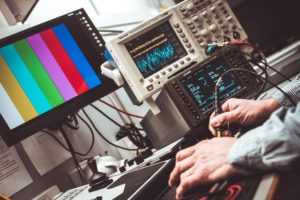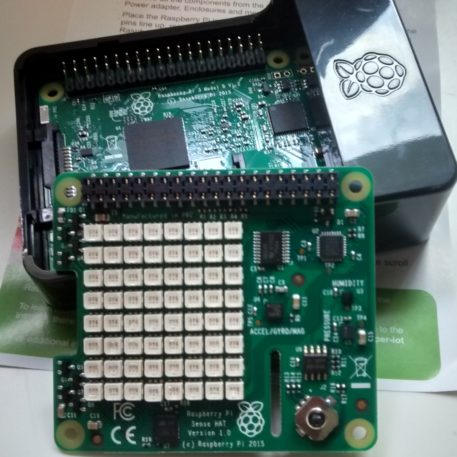Internet of Things as Business Solutions
 The wide popularity of Internet of Things (IoT) and its typical presence nearby to any modern individual make it one of the major drivers creating attractive opportunities both for the individuals and economies that are derived from the information generated by it. Economic benefits of IoT consists but not limited to efficiencies in communication, control over nearly anything and cost savings which have direct influence on business processes, quality of our lives and even how the customers are retained (mostly by behavioural data).
The wide popularity of Internet of Things (IoT) and its typical presence nearby to any modern individual make it one of the major drivers creating attractive opportunities both for the individuals and economies that are derived from the information generated by it. Economic benefits of IoT consists but not limited to efficiencies in communication, control over nearly anything and cost savings which have direct influence on business processes, quality of our lives and even how the customers are retained (mostly by behavioural data).
IoT is expected to have an immediate impact on Human health, fitness and productivity; Home appliances; Retail businesses; Corporate offices, Production plants and Worksites; Vehicles; Cities and Localisation services.
If we walk through each of these with short examples: imagine a user with the fitness tracker. Active hours of the day are collected in a data sheet. Activity intensity is captured and through the built-in gyroscope and GPS; we might have some guess for the activity type the user was engaged in as well as the user’s whereabouts throughout the day. Probably this user has registered a dashboard for him/herself in the cloud where we can collate age, weight, occupation and other personal information together. Or you can expand this example to a heart patient whose heart beats are being monitored continuously by his physician and an alert prompt is available.
At home, usage of IoT is way beyond thermostats now. If your egg rack in the refrigerator is short of eggs, your refrigerator can send you messages around the off-work time to replenish eggs as a reminder. In retail, it is possible to gauge the crowds, have a clear understanding of walking traffic, in-store traffic, restroom usage, personalised promotions and so on. Similarly, corporate offices, production plants and worksites may have increased productivity as well as better employee health and safety protocols.
Your vehicle may prompt the tow service in the event of a breakdown; extract driving logs for traffic authorities’ review (similar to black boxes of aeroplanes) and even get firmware update over the air without a need for you to spend half days at the weekend at dealer’s workshop. Increased water quality, water collection processes, enhanced street lighting, better traffic flow management are only a few of large action sets that IoT has to offer for smarter cities. Especially while during our era where tracking of airplanes, ships and other vehicles are one of the utmost importance to us as well as authorities, IoT has a solution to it.
While all these examples excite us, one of the future aspects that academics predict is Web of Things where control of smart devices might be operated through the web. This is as exhilarating as it also seems a little far to present day. But never say never, right?
To wrap up; huge opportunities are expected to blossom both for economies and individuals. As IoT by nature does not have any boundaries like data; actionable, logical and marketable data size forming through systems, sensors, control mechanisms, communications will be enormous. This is where today’s lifestyles and business models are prone to change. IoT’s already amazing penetration to individuals is no longer negligible as it is becoming a permanent part of today’s modern technologies.
If safety, security and privacy concerns are addressed appropriately, IoT will offer seamless decision-making to businesses. And you know what? It’s already started happening now.
So, isn’t it better to get started learning about IoT now and discover more about IoT and its involvement into our present lives? The IoT Academy has plenty of good courses to choose from and caters a wide range of audience from all ages to meet the future. Hurry, contact us now to find out more!
 Ladies and Gentlemen, please welcome The Internet of Things (IoT) to our lives that have enormous potential increasing the quality of life, enhance the productivity and performance of systems and processes that in return will save valuable time for everyone and every corporate body.
Ladies and Gentlemen, please welcome The Internet of Things (IoT) to our lives that have enormous potential increasing the quality of life, enhance the productivity and performance of systems and processes that in return will save valuable time for everyone and every corporate body. Self-empowerment. A single, simple statement that can summarise how the most important transformation brought about by the Internet. It is now possible to learn anything, anytime and anywhere directly if you would like to get yourself educated. The Internet is no longer a network of connected universities and their libraries but an organism with a lot of business aspects in it which offers borderless market access to businesses, schools and most importantly, to information.
Self-empowerment. A single, simple statement that can summarise how the most important transformation brought about by the Internet. It is now possible to learn anything, anytime and anywhere directly if you would like to get yourself educated. The Internet is no longer a network of connected universities and their libraries but an organism with a lot of business aspects in it which offers borderless market access to businesses, schools and most importantly, to information. Silicon Valley, the high-tech universe known to every living soul on this planet is focusing on a single thing: Technological Innovation. Anyone who is a tech user and connected to “something” is already a part of 640 terabytes of data being populated every minute. Location information, Google searches, your connectivity to a telco, Facebook, Instagram, photo uploads, cloud drive services and so on. And yes, every minute 640 terabyte of data is populated.
Silicon Valley, the high-tech universe known to every living soul on this planet is focusing on a single thing: Technological Innovation. Anyone who is a tech user and connected to “something” is already a part of 640 terabytes of data being populated every minute. Location information, Google searches, your connectivity to a telco, Facebook, Instagram, photo uploads, cloud drive services and so on. And yes, every minute 640 terabyte of data is populated.


